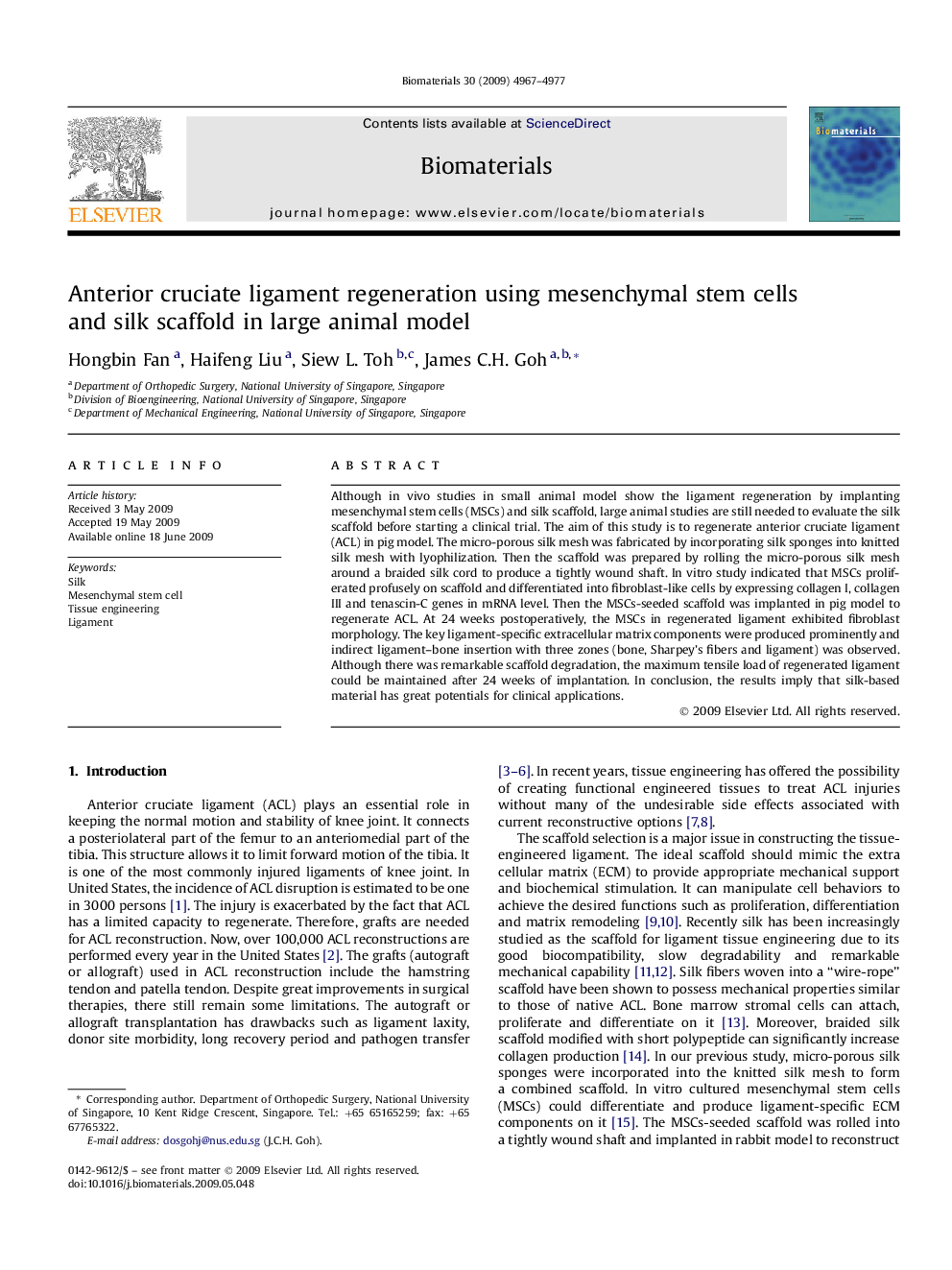| کد مقاله | کد نشریه | سال انتشار | مقاله انگلیسی | نسخه تمام متن |
|---|---|---|---|---|
| 9031 | 615 | 2009 | 11 صفحه PDF | دانلود رایگان |

Although in vivo studies in small animal model show the ligament regeneration by implanting mesenchymal stem cells (MSCs) and silk scaffold, large animal studies are still needed to evaluate the silk scaffold before starting a clinical trial. The aim of this study is to regenerate anterior cruciate ligament (ACL) in pig model. The micro-porous silk mesh was fabricated by incorporating silk sponges into knitted silk mesh with lyophilization. Then the scaffold was prepared by rolling the micro-porous silk mesh around a braided silk cord to produce a tightly wound shaft. In vitro study indicated that MSCs proliferated profusely on scaffold and differentiated into fibroblast-like cells by expressing collagen I, collagen III and tenascin-C genes in mRNA level. Then the MSCs-seeded scaffold was implanted in pig model to regenerate ACL. At 24 weeks postoperatively, the MSCs in regenerated ligament exhibited fibroblast morphology. The key ligament-specific extracellular matrix components were produced prominently and indirect ligament–bone insertion with three zones (bone, Sharpey's fibers and ligament) was observed. Although there was remarkable scaffold degradation, the maximum tensile load of regenerated ligament could be maintained after 24 weeks of implantation. In conclusion, the results imply that silk-based material has great potentials for clinical applications.
Journal: Biomaterials - Volume 30, Issue 28, October 2009, Pages 4967–4977